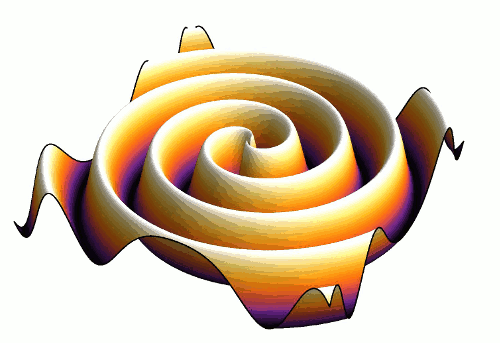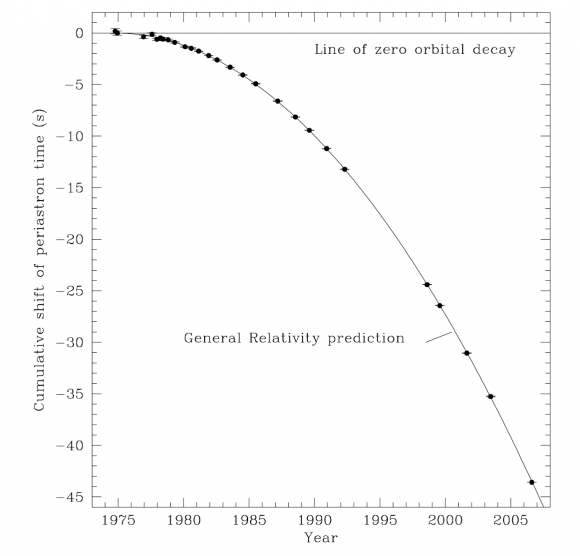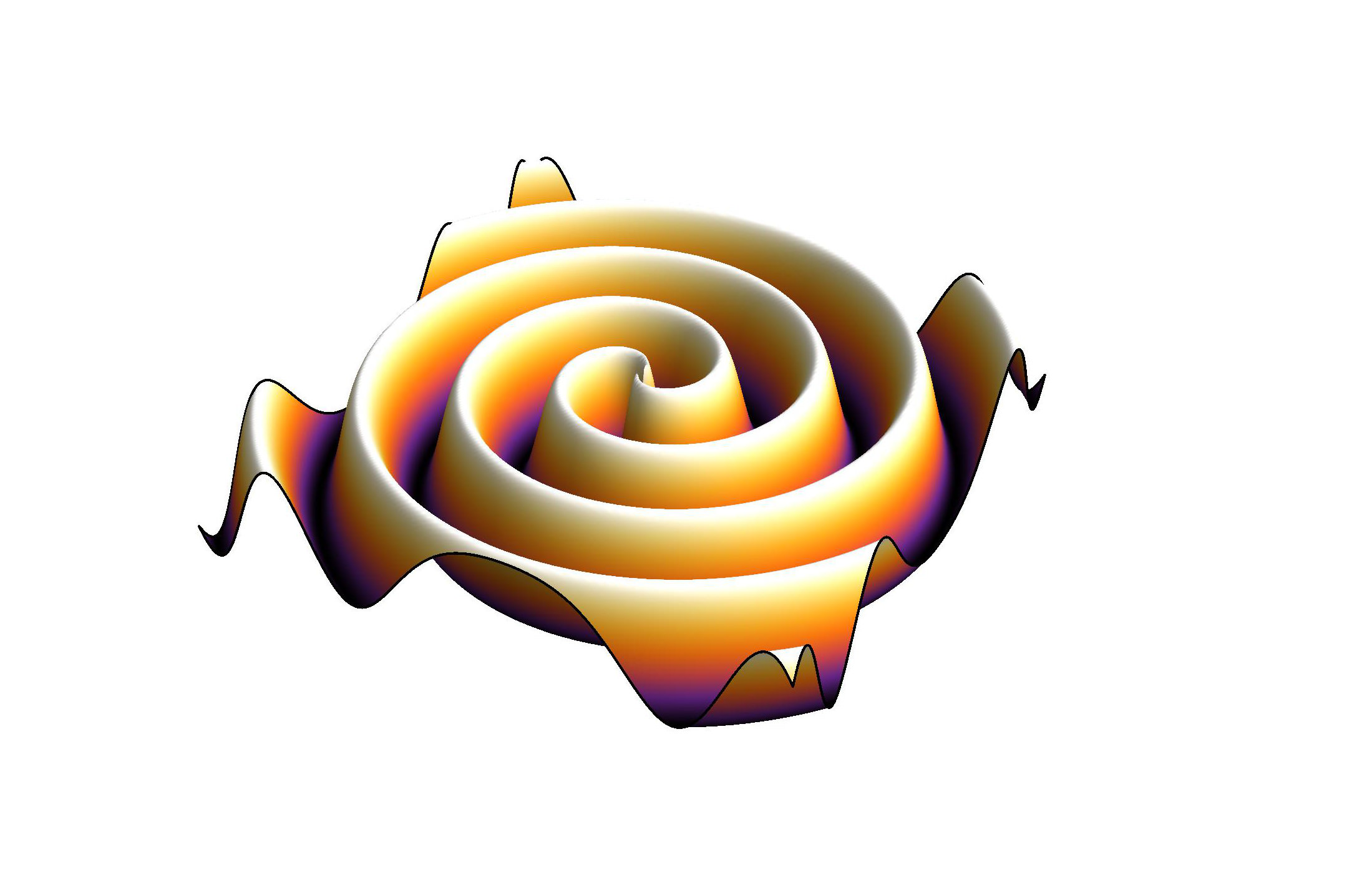Soon, very soon, Thursday, February 11, at 10:30 Eastern time, we are likely to learn at any one of several press conferences – at the National Press Club in Washington, D.C., in Hannover, Germany, near Pisa in Italy and elswhere – that gravitational waves have been measured directly, for the first time. This would mean the first direct detection of minute distortions of spacetime, travelling at the speed of light, first postulated by Albert Einstein almost exactly 100 years ago.
Time to brush up on your gravitational wave basics: In Gravitational waves and how they distort space, we had a look at what gravitational waves do. In Gravitational wave detectors: How they work we saw how you can measure gravitational waves. Third and final step: What are typical gravitational wave sources? How are these waves produced?
Objects in orbit
The simplest situation that produces gravitational waves in the cosmos is almost ubiquitous: two or more objects orbiting around each other under their own gravity. The waves they generate are reminiscent to a very slow mixer in the middle of a pool of water:  This is not something you would see, of course. The wave that is pictured here represents the strength of the minute changes in distance that would be caused by the gravitational wave, just as we’ve seen in Gravitational waves and how they distort space. The animation is courtesy of Sascha Husa of the Universitat de les Illes Balears.
This is not something you would see, of course. The wave that is pictured here represents the strength of the minute changes in distance that would be caused by the gravitational wave, just as we’ve seen in Gravitational waves and how they distort space. The animation is courtesy of Sascha Husa of the Universitat de les Illes Balears.
Indirect evidence
Gravitational waves emitted by orbiting objects carry away energy. Elementary physics tells you that if you remove energy from an orbiting system, the distance between the orbiting objects will shrink, and they will orbit each other faster than before.
In fact, gravitational waves making a binary system of neutron stars speed up was the first evidence for the existence of gravitational waves. The binary neutron star was discovered by Hulse and Taylor in 1974, and the speed-up caused by gravitational waves published by Taylor and Weisberg in 1984, after a careful analysis of seven years’ worth of data. Hulse and Taylor were awarded the Nobel prize in physics in 1993 for their discovery.
Here, in an image from an article by Weisberg 2010, is the match between general relativistic prediction and observation in all its glory (or at least in all its glory up to 2005):  As the two neutron stars speed up, they will reach the point of closest approach within their orbit earlier and earlier. How much earlier, in seconds, is plotted on the vertical axis, year of measurement on the horizontal axis.
As the two neutron stars speed up, they will reach the point of closest approach within their orbit earlier and earlier. How much earlier, in seconds, is plotted on the vertical axis, year of measurement on the horizontal axis.
A matter of frequency
Today’s ground-based detectors cannot detect gravitational waves from all kinds of bodies in mutual orbit. The bodies need to be massive, compact and, crucially, orbit each other quickly enough. For bodies orbiting each other less than a few times per second (very quick, if you are talking about astronomical bodies!), the frequency of the resulting gravitational wave will be too low for ground-based detectors to measure reliably. In the low-frequency regime, below 10–100 Hertz, disturbances caused by undulating motions of the Earth’s surface (“seismic noise”) are dominant, and drown out the minute effects of gravitational waves.
When it comes to gravitational waves from supermassive black holes, or from white dwarfs, we will have to wait for future space-based gravitational wave detectors.
The most promising gravitational wave sources go “chirp”
When an orbiting system emits gravitational waves, orbital motion speeds up. And when orbital motion speeds up, the system emits even more energy in form of gravitational wave. This runaway process ends only when the orbiting objects collide and merge.
The final phase is marked by a quick increase in orbital speed, corresponding to ever higher gravitational wave frequency, and ever higher intensity. Here’s what such a signal looks like (image and audio from “Chirping Neutron Stars” on Einstein Online):  You can see how the frequency and intensity increase right up to time 0, when the two neutron stars collide and merge.
You can see how the frequency and intensity increase right up to time 0, when the two neutron stars collide and merge.
For stellar black holes (with masses between a few and a few dozen solar masses) and neutron stars, in any combination, the frequencies of these gravitational waves are the same as the frequencies of audible sound waves. One can actually represent these changes in frequency as an audible tone, as in this example of two neutron stars merging (Audio © B. Owen, Penn State University):
Here is the same kind of audible representation for the merger of a black hole and a neutron star (© AEI/GEO600):
Sadly, what a gravitational wave detector registers is the combination of this sound plus assorted noise, which sounds like this (© AEI/GEO600):
Colleagues at Cardiff University have made this into a nice online game: Black Hole Hunter. Head over there and see if you can hear the signal beneath the noise!
(And you can hear live chirps by various astrophysicists (and others) under the hashtag #chirpForLIGO on Twitter.)
This kind of signal, from merging stellar black holes or neutron stars (in any combination) is the most promising candidate signal for today’s detectors – and going by the rumors, that is indeed what LIGO appears to have found.
The final part of the signal is interesting for a particular reason: It doesn’t follow from any simple formulae, and can only be modelled with complex computer simulations of such situations known as numerical relativity. If the detectors get a good detection of this very last bit, that will be a good test for current numerical simulations of general relativity!
Other gravitational wave sources
Chirps are comparatively simple, and likely the first signals to be found.
Another kind of signal that could be found is periodic (or nearly so), and would be produced e.g. if rapidly rotating neutron stars are less than perfectly smooth. No such luck as of yet, though.
Next would come the gravitational wave sources that are somewhat less understood, such as the processes in the interior of supernova explosions. And finally, once numerous signals have been detected, showing the scientists that their detectors are indeed working as they should, there might be the detection of completely unexpected signals. Whenever astronomers have opened a new window to the cosmos – the radio window, infrared window, x-ray window – they have found something new and unexpected. Who can tell what opening the Einstein window, the window of gravitational waves, will teach us about the universe?
Update: Gravitational Waves Discovered


Did I read somewhere that the difference in length of the two arms of a gravitational wave detector as measured by an interferometer is of the order of 1e-19 metres ?? I can’t find where I saw this. If true it beggars belief how it can be measured at all !
Excellent series of posts Markus, keep’em coming!
Indeed!!
So converting 3 solar masses into energy out of 60 is pretty efficient. And that energy racing away at the speed of light. Presuming that conversion rate works in all the high energy dynamic converting mass into gravitational waves how would that affect the universe? Mergers of SMBKs would be spectacular losses of mass, no?
Now I wonder about the affect of a very very very large wavelength gravity wave – both massive and long period. How would it be visible in the observable world? Think of it like a tsunami affecting the spacetime continuum, perhaps of a SMBH merger. I wonder what it would look like.